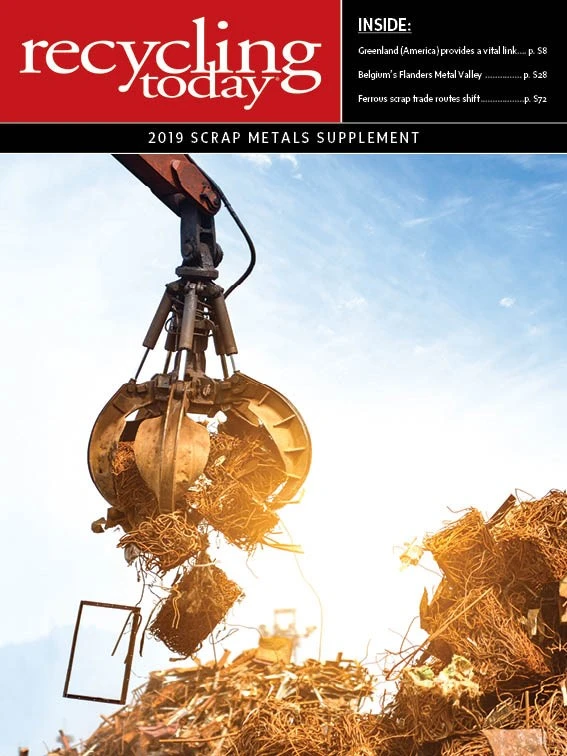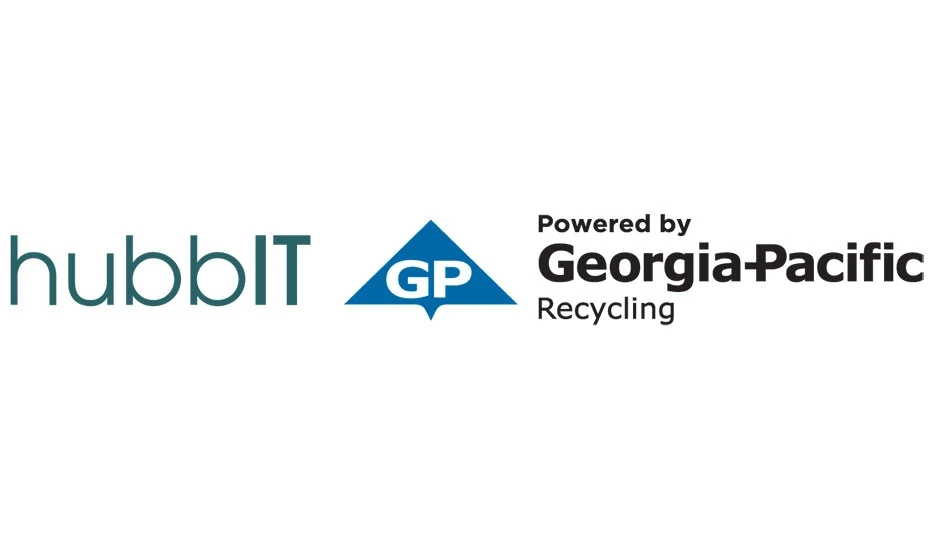
Once they are established, the ferrous scrap export market price indicators (MPIs) charted and tracked by publications and used by traders can stay in place for years or even decades. MPI is the term I use to describe the latest concluded price in a certain market. That makes it the market price or the price people expect to hear when asking, “Where’s the market?”
As a trader who has been buying and selling ferrous scrap for several decades, however, I can testify that they do, in fact, change. Some MPIs that are referenced now might change in the future.
MPIs are tied into common export-import trading patterns for ferrous scrap. The market for this trade is not now, nor has it ever been, static. This means new or altered MPIs are created when scrap that formerly went to Destination A from Loadport B begins to instead head to Destination C or is possibly outbound from another port region.
Container shipments forge new destinies
In the early 1980s, when I began my career in ferrous scrap trading, the material moved from one continent to another via bulk vessels, which had been the tradition. Buying ferrous scrap in containers was unheard of then.
During that time, South Korea had a booming steel industry but generated very little ferrous scrap domestically. Thus, the ferrous MPI in the 1980s reflected the common U.S. West Coast-to-South Korea trade pattern.

On the East Coast, Turkey and India were common buyers, though through quirks of global financing, Indian buyers used Swiss francs as their currency of choice when purchasing overseas scrap. (For more details on how MPIs have changed each decade, see the story “The evolution of a global industry.")
From 1983 to 2018, the years spanning my career, each of those nations have continued to buy U.S. scrap, with Turkey heading to the front of the line in terms of tonnage.
In addition to shifting destinations, a considerable change in technique and pricing has involved the emergence of containerized ferrous scrap shipping. This was a game changer in terms of international scrap shipping, affecting outbound ports and inbound destinations.
The person who led the charge to buy ferrous scrap in containers deserves the industry equivalent of an Oscar. (My best guess is that it was an Indian trader.) Starting approximately in 2000, this move really changed the face of global supply and demand.
Before containerization, bulk, trans-boundary shipments of ferrous scrap had to be shipped from cities with deep sea ports. However, with the introduction of the container option, ports in the Caribbean, Central and South America and Africa joined the ranks of ferrous scrap exporters overnight. As a result, scrap collectors in these regions started to sprout up, exporting to distant markets that were previously unfamiliar to them. (I cannot tell you how many times I had to spell out the names of ports like Chittagong, Laem Chabang, Kaohsiung and Gwangyang, none of which is in China.)
Much of this newly shippable ferrous scrap went to buyers in the Far East and Central and Southeast Asia, where buying in bulk had previously been the norm.
This phenomenon, however, most acutely changed the face of import buying in nations including Bangladesh, India, Pakistan, Malaysia, Indonesia, Singapore, Thailand, Taiwan, Korea and China.
With a few exceptions, almost all of these South American and African sellers did not have access to ports with bulk cargo handling capabilities and did not have the confidence to sell into the export market or engage in other activities to build up their ferrous scrap inventories. Now, they could collect scrap and serve export markets.
For the steel mills, the reduced risk of buying smaller lots was more attractive and easier to manage than the potential business- crashing risk of purchasing bulk cargo at a high price. It also eliminated the need to tie up a substantial sum of company money in a letter of credit (LC) to the seller for several weeks. For many steelmakers, smaller letters of credit provided a big advantage, resulting in the shift to container buying. As a result of this shift, steel mills were able to better manage their cash flow and reduce their price risk exposure and their foreign currency exposure because all this scrap was transacted in U.S. dollars.
Over the years, many buyers have cut out bulk buying entirely, while others still make a few bulk buys in addition to their container purchases. However, some buyers, including the Turkish and Greek steel mills, never switched to containerized ferrous scrap shipments and remained bulk buyers. The reason for that being that most steel mills are located next to their own private berths and have had infrastructure in place for several decades. Besides, the volume of scrap these mills need would congest the often very narrow roads connecting the port and the steel mill, creating a logistical nightmare.
Old habits are hard to break
New trade patterns have thrived in the container shipping era, but that has not meant the end of established bulk buying habits.
With the decade nearing its end, however, it seems like a good time to consider whether some old MPIs might fade as benchmarks and whether new candidates are emerging as MPIs.
The current MPIs reflect the most common trade routes and are built around a number of patterns:
- bulk shipments of heavy melting steel (HMS) 80/20 from the U.S. East Coast to Turkey;
- bulk shipments of HMS 80/20 from the U.S. West Coast to South Korea; and
- container shipments of HMS 80/20 from the U.S. to Taiwan.
To what extent are buyers and sellers entering an era with new routes to consider? For some recyclers and traders, a few new trade routes are emerging or already have become a reality:
- the U.S. West Coast to Turkey;
- the U.S. East Coast to South Korea; and
- the U.S. East Coast and Europe to several Southeast Asian destinations.
Shipping from the U.S. West Coast to Turkey takes place when you have a depressed Asian market and buyers from that region are absent. If freight rates from the West Coast to Turkey are depressed, this pattern can work.
I am proud to have been on the team that actually shipped the first ever cargo from the U.S. West Coast to Turkey. It was 1994 and the Turkish buyer’s in-house inspectors were arguing who got to inspect the cargo because it meant traveling to Los Angeles.
About a year later, our stunt was overshadowed when a Hawaii-based recycler managed to sell a cargo to the same steelmaker. Word got back to us that the internal arguments to inspect that cargo were even more heated than those for the LA trip.
I have a feeling we might start to see the revival of some old popular routes from the 1980s and 1990s, including the U.S. East Coast to Korea and maybe even as far as Southeast Asia or the European Union to a handful of Southeast Asian destinations. A lot will depend on how the U.S. steel tariffs evolve in 2019.
Popularity contest
It can be difficult for a trader to buck trends, but it also is worth asking whether a popular market is necessarily a good market.
I recall attending the Bureau of International Recycling (BIR) Convention in Oslo, Norway, in 2003. China had just opened up for business, and every conversation you had with anyone in the business touched on China. Wherever you went, whoever you spoke to, all you heard was China, China, China. Everybody was running to China to become a registered ferrous scrap supplier. It naturally also pushed ferrous scrap prices upward.
People made a lot of money for a while in China, but they also expended a lot of energy for a market that caused significant headaches and then cooled off quickly.
Two or three years later, Vietnam became the new darling of the ferrous scrap industry. But this market also quickly became a case study in the pitfalls scrap traders can encounter. That lengthy list of pitfalls has included:
- periods when 100 percent payment by LC was not allowed;
- even with a partial LC, no telegraphic transfer reimbursement was allowed;
- physical documents that must go to the LC opening bank for approval;
- encountering Vietnamese bank staff who were not well-versed in LC terms;
- bank staff nitpicking LCs and looking for discrepancies, often resulting in delayed payment and being at the buyers’ mercy;
- even tougher conditions in a down market; and
- difficulty finding a U.S.-based bank with an appetite for a Vietnamese LC.
This list of Vietnam-specific warnings can be added to those that apply to markets around the world. (See the sidebar, “A trader’s checklist,” above.)
In 2018, the steel tariffs have created pitfalls and opportunities.
The Trump administration tariffs on Chinese goods and steel, even from our North American trading partners Canada and Mexico, have gained much of the attention, but the U.S. also has levied tariffs on Turkish steel. With Turkey being by far the largest buyer of exported U.S. ferrous scrap, the health of Turkey’s steel industry has an enormous impact on the global ferrous scrap market.
In the 2018 tariff climate, we saw patterns we hadn’t seen in about 20 years, including ferrous scrap shipped from the U.S. East Coast to Vietnam. The Turks overall are not buying as much scrap, so shippers in Europe also are finding new destinations that are farther away. If the tariffs remain in place, we might see more such movements as time goes by; but, if the tariffs are rolled back, we might see the industry standard routes return—or maybe not. Stay tuned.
Americans and Europeans have been regular exporters to Turkey for years, but we all knew at some point Turkish demand would drop. Middle East countries, especially the Gulf States, have been building up their own steelmaking capacity. They are now importing more ferrous scrap and less Turkish finished steel.
What we didn’t foresee was the extent to which the current Turkish leadership would have ambitions to rebuild Turkey and reinvigorate its economy via large steel-intensive infrastructure projects. This includes the building of a third international airport to serve Istanbul, which began opening in phases in late December 2018, making it one of the few cities in the world with three such airports. Also absorbing Turkish steel are several major construction projects. A new canal also has been proposed, designed in part to alleviate heavy shipping traffic in the Bosporus.
The current ambitious spending by Turkey’s government shows that while ferrous scrap traders should be on the lookout for new buyers, we also should not take our eye off Turkey. Additionally, Turkey really reaches across the world with its steel exports. Because of these factors, hopefully the country is entering the new year with plans to keep its steelmaking sector busy.
Get curated news on YOUR industry.
Enter your email to receive our newsletters.

Explore the January 2019 Scrap Metals Supplement Issue
Check out more from this issue and find your next story to read.
Latest from Recycling Today
- Astera runs into NIMBY concerns in Colorado
- ReMA opposes European efforts seeking export restrictions for recyclables
- Fresh Perspective: Raj Bagaria
- Saica announces plans for second US site
- Update: Novelis produces first aluminum coil made fully from recycled end-of-life automotive scrap
- Aimplas doubles online course offerings
- Radius to be acquired by Toyota subsidiary
- Algoma EAF to start in April





